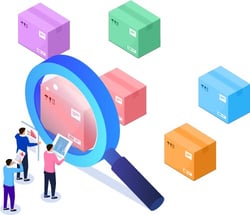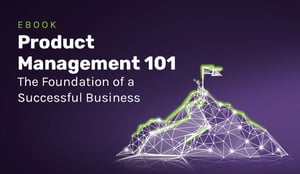 A lot of stress can be involved with the development, management, and production of products, and when stress builds, mistakes can start to pop up. As a product manager, you need to find a way to mitigate that stress and stay on track with minimal errors. Having a clear strategy, encouraging consistent communication, and using the right tools can all help to make the job easier and help you avoid these five mistakes product managers tend to make in automotive product roadmapping.
A lot of stress can be involved with the development, management, and production of products, and when stress builds, mistakes can start to pop up. As a product manager, you need to find a way to mitigate that stress and stay on track with minimal errors. Having a clear strategy, encouraging consistent communication, and using the right tools can all help to make the job easier and help you avoid these five mistakes product managers tend to make in automotive product roadmapping.
1. Not Aligning the Roadmap to Company Goals
 The best strategy to meet company goals is to align your product strategies and roadmaps to the goals. Ask yourself the following questions when setting up your roadmaps and your long-term goals:
The best strategy to meet company goals is to align your product strategies and roadmaps to the goals. Ask yourself the following questions when setting up your roadmaps and your long-term goals:
- What image does the company strive for?
- What standards must the company meet?
- Who is the target audience?
Setting these goals from the start gives you a great launching point for mapping out plans more specific to certain product lines, products, or services. When you feel off track, look back to those company goals and realign. Does your company want to make all vehicles electric by a certain date? Are you prioritizing AI features such as park assist in a certain product line? These need to be reflected in the product roadmap. Having the right tools at hand can also help you improve your product strategy and create roadmaps that work with you rather than causing you more work.
2. Not Starting With the Big Picture
 How can you understand the details of production plans without understanding the big picture? Don’t jump the gun—start your roadmap off with the big picture before diving into the management of those details. You can outline the long-term vision of the company in the roadmap so all teams know the direction your teams are headed.
How can you understand the details of production plans without understanding the big picture? Don’t jump the gun—start your roadmap off with the big picture before diving into the management of those details. You can outline the long-term vision of the company in the roadmap so all teams know the direction your teams are headed.
As mentioned, to meet your long-term goals, you want to outline a plan so that you can be on track from the beginning. Keep up that big-picture thinking as you get into the product roadmap management of differentiation strategies, production schedules, product portfolios, and more. Knowing the big picture makes it easier to decide which features to focus on, which products to improve, and which ideas to abandon or save for a future time.
3. Forgetting the Flexibility of the Roadmap
 Some product managers forget that their roadmap is a guideline and has the flexibility to change and adapt. We all know plans don’t always work out how they’re meant to. Sometimes the unexpected happens, new ideas pop up, and things just end up going in a different direction.
Some product managers forget that their roadmap is a guideline and has the flexibility to change and adapt. We all know plans don’t always work out how they’re meant to. Sometimes the unexpected happens, new ideas pop up, and things just end up going in a different direction.
But if your product roadmap is rigidly set in stone, how can you manage these unexpected changes?
Flexibility not only makes it easier to adapt to changes in the roadmap but also to adapt to unexpected disruptions, such as supply chain issues, labor shortages, environmental problems, etc. Remembering that your roadmap can be adjusted should help reduce the stress on your plate.
4. Using Your Gut and Forgetting the Facts
 It’s easy to believe you know what the right options are, but when making product decisions, it’s expensive to be wrong. Why gamble when you have facts and data to base decisions from?
It’s easy to believe you know what the right options are, but when making product decisions, it’s expensive to be wrong. Why gamble when you have facts and data to base decisions from?
Let’s take product differentiation strategies into mind. How do you know which strategy will be most successful with a certain product? Are customers responding better to vehicles assessed with horizontal differentiation, vertical differentiation, or mixed differentiation? This isn’t something to just flip a coin on.
Many product managers make the mistake of using their gut rather than relying on hard information. It’s always essential to analyze real data based on market research, user feedback, and financial assessments rather than making decisions based on hunches or ideas.
Creating a Single Source of Truth to Inform Your Decisions
Centralizing your data helps keep your information in one location where all stakeholders can have access to it. Effective product management requires a single source of truth to rely on. When data is centralized and accessible, guesswork becomes a thing of the past. All data is kept in one place and can be accessed by relevant team members as needed.
Having one source of truth also means there is no need to backtrack through emails or old files to find records, past updates, or old stats. All of those things remain accessible in the centralized source of truth.
Building and managing a data resource in your product roadmap allows you to reference accurate information to make decisions. You don’t need to guess and cross your fingers because you’ll be able to make an informed decision based on collected data in a space that is shareable, up-to-date, and free of silos.
5. Not Focusing on Cross-Functionality
 Cross-functionality is extremely beneficial to successful product development and production, especially in the automotive sector. It can be tempting to withdraw into yourself and neglect group input when you’re managing a product that you’re excited about, but don’t forget the resourcefulness and expertise of those around you. Keep communication flowing. When one team is stumped, another team might step in with just the right idea to get the ball rolling again.
Cross-functionality is extremely beneficial to successful product development and production, especially in the automotive sector. It can be tempting to withdraw into yourself and neglect group input when you’re managing a product that you’re excited about, but don’t forget the resourcefulness and expertise of those around you. Keep communication flowing. When one team is stumped, another team might step in with just the right idea to get the ball rolling again.
Some of the best ideas can come from the place you least expect. Allowing collaboration and involving multiple teams in your product development and roadmap creates a huge advantage and leads to a more successful product overall. Using the right tools that facilitate communication and centralized access to information helps to support cross-functional teams.
Holding timely meetings, sharing files, setting goals and deadlines, and presenting updates to executives are all essential for effective product management.
Product Management Requires Continuous Development
Product managers wear many hats so no product manager is perfect. The best in the field pursue continuous professional and self-development, whether it’s the automotive industry, pharmaceuticals, technology, or electronics. Knowing the most common mistakes helps you work to prevent them from happening amongst your teams.
in the field pursue continuous professional and self-development, whether it’s the automotive industry, pharmaceuticals, technology, or electronics. Knowing the most common mistakes helps you work to prevent them from happening amongst your teams.
Find out more about the capabilities of Gocious by booking a demo with us. We’ll meet with you to show you around the program, get to know your needs, and discuss software features and how you can make them work for you and your company.


